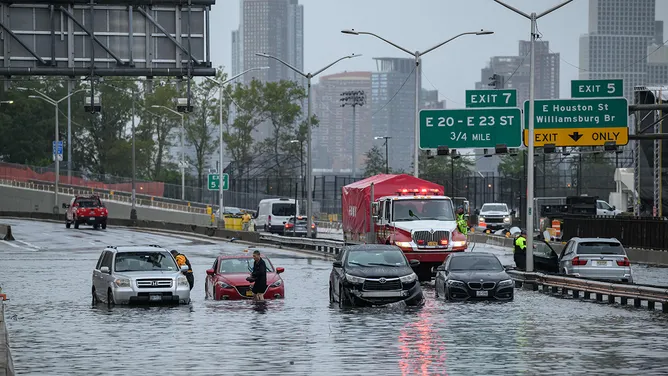On Sept. 29, New York City found itself in the throes of a historic rainfall event, grappling with a sudden and relentless deluge that left the city and its residents in disarray. The torrential rain caused rising floodwaters in various parts of the metropolis, turning bustling streets into treacherous waterways and transforming everyday commutes into daunting challenges.
Within a short span of time, the heavy rain overwhelmed drainage systems in Brooklyn, Manhattan, Queens, and Hoboken. Major roads morphed into rushing rivers, obstructing vehicles and causing basement apartments to become inundated. The floods left residents in shock and despair.
In response to the unprecedented rainfall on Sept. 29, New York State Governor Kathy Hochul stated: "I am declaring a State of Emergency in New York City, the Hudson Valley, and Long Island in response to the significant, dangerous rainfall that is currently impacting the region and is expected to continue for the next 20 hours."
The New York subway system, one of the world's largest transit systems, suffered significant disruptions with subway lines in Brooklyn bearing the brunt of the storm after receiving over 100 mm of rain in just three hours. Subway services were partially halted, diverted to alternative routes, or operated at reduced speeds, causing considerable inconvenience for commuters. For bus transportation, 44 out of New York's 3,500 buses were also affected, leading to disruptions to transportation across the city.
Airline operations were no exception to the chaos that unfolded. According to reports from the FlightAware website, LaGuardia Airport in New York City witnessed 155 flight cancellations and 1,709 delays until the evening of Sept. 29. Terminal A was shuttered due to flooding, exacerbating the already tumultuous situation. John F. Kennedy International Airport, a major international hub, also experienced over 100 canceled flights and 268 delayed flights, causing a ripple effect throughout the region.
Throughout the day, the National Weather Service issued “considerable” flash flood warnings through cell phone alerts, underscoring the extreme nature of this rainfall event. The storm altered the city's landscape, creating new watercourses in places like Prospect Park. Toppled trees, uprooted sidewalks, and even cleaved parked vehicles characterized the effect of the water in Prospect Heights, Brooklyn. In neighborhoods like Windsor Terrace, which was built on the slant of a hill, residents found themselves suddenly surrounded by floodwaters. Students had to wade through deep water to go to classes, while neighbors pitched in to clear storm drains clogged with fallen leaves.
Residents had to endure prolonged chaos throughout the whole day on Friday. Fortunately, the rain eased by Saturday, allowing New Yorkers to finally resume their daily routines. Subway services were restored, though some Metro-North branches experienced delays. Airports returned to normal operations. Roads that had been closed the previous day, such as Franklin D. Roosevelt Drive and Belt Parkway, were reopened. Twenty-eight people were rescued in a "historic" storm, said Governor Hochul in the Saturday conference. Thankfully, no deaths were reported from the storm.
The city's Emergency Management Office continued to assess the extent of flood damage and coordinate efforts to address the situation. This involved clearing debris, removing fallen trees, and collecting damage reports from residents. The city was no longer under a flood watch, but officials remained cautious about the potential for continued flood risks.
In recent years, flooding in New York City has become common. Similar scenes of inundation were witnessed in 2021 when Hurricane Ida wreaked havoc on the city, claiming 11 lives. The recurring challenge of flooding in New York City can be attributed to a combination of factors, with one of the primary culprits being the limitations of its drainage infrastructure. The city's drainage network is engineered to handle up to 1.75 inches of rainfall per hour. Regrettably, the storm on Friday far exceeded this threshold, with over two inches of rainfall occurring between 8 a.m. and 9 a.m.
As New York City grapples with the challenges presented by increasingly intense rainfall events, experts emphasize the urgent need for substantial investments in infrastructure enhancements and innovative solutions. The city confronts the formidable task of keeping the city's infrastructure in pace with the escalating impact of climate change.



